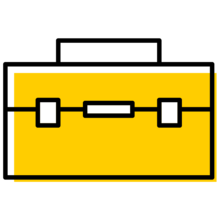Consider these best practices for starting a relationship with a new child caregiver, particularly one providing in-home care.

Accordians
Confirm compensation before you schedule any care. Discuss both hourly rates and expenses like meals, transportation, and activities for your children. Consider these pay rates as starting points:
- One child: $15-20/hour
- Two for three children: $20-25/hour
- Four children: $30/hour
Trade phone numbers, emails, and home addresses with your new caregiver. Provide contact info for everyone in your family. Get your caregiver’s license and/or taxpayer ID number in case you need it for your paperwork.
Establish the best way to contact each other—e.g., phone calls or texts—during the day or in event of emergency. Tell your caregiver if you’d like updates or pictures during the day (though don’t make requests that detract from caregiving responsibilities).
Write down phone numbers and any additional contact info for the following and make sure the list is easy to find:
- Pediatrician
- Schools
- Close friend, family member, or neighbor
Write down what you’ve agreed upon regarding pay, days and hours of work, and any additional items. Give your caregiver a copy and keep another copy for yourself.
Let them know you have a new caregiver so they can expect to see someone new with your children.
Give your caregiver a set of house keys, lock/garage codes, and any instructions on how to use them.
Tell your caregiver how to:
- Operate heating/air conditioning
- Operate TV, cable, game systems, etc.
- Access wi-fi
- Run dishwasher, laundry, or any other appliances
- Use toddler safety gates or other safety equipment
Tell your caregiver how to:
- Operate heating/air conditioning
- Operate TV, cable, game systems, etc.
- Access wi-fi
- Run dishwasher, laundry, or any other appliances
- Use toddler safety gates or other safety equipment
Tell them if they should expect maintenance calls, etc. Confirm that other visitors—including caregiver’s friends and relatives—are not permitted.
Let your caregiver know if they need to let out, walk, or feed pets. Provide any other special instructions.
Make sure your caregiver understands your expectations for hand washing, social distancing, cleaning toys and surfaces, and what to do if someone starts feeling sick.
Tell your caregiver about any allergies or food issues your children have and establish any foods that are off limits. If your children have serious allergies, put away any food that would harm them.
Review your children’s medication routines—dosages, times of day, etc.—if applicable. Keep regular or emergency medications (EpiPens, allergy or asthma meds) in a safe but accessible location. Write down guidelines and keep with contact info and other available documentation.
Establish when children need to be bathed, what soaps or shampoos to use, and safety routines (e.g., not leaving children under age 6 unattended in the tub). If your caregiver is changing diapers, show them where supplies are located and how to use them. Explain potty-training routines if applicable.
Let your caregiver know where children can safely play outdoors and whether they can go outside unattended. Explain rules for equipment like bikes or trampolines. Review rules for video games or screen time. Share nap or quiet time schedules if applicable and review any other special attention your children may need.
Especially for your first week with a new caregiver, write down schedules for school/online learning, naps, meals, homework, etc., to help establish a routine. Each day, point out any special events or changes to the routine. Consider creating a collaborative calendar you both can reference.
Discuss how you’d like your caregiver to manage their own social media use when they’re with your children. Let them know if you’d prefer that they not create posts, photos, or videos, that reference your children.
Information on COVID child care considerations from Iowa State Extension